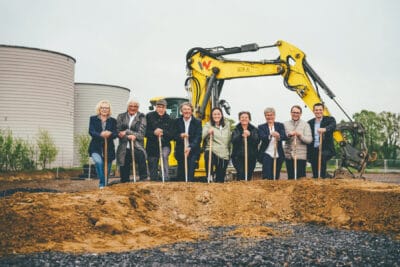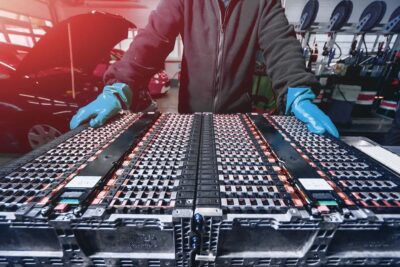ARPA-E grants millions in funding to clean energy and mobility projects
Overall, the selectees span 22 states and include renown universities, national laboratories, and private companies, so ARPA-E. The awarded funding varies but is often in the lower multi-million range for e-mobility advances. The project featured below to seek, for example, to improve fuel cells or batteries and battery charging, vehicles or components thereof, also their manufacture.
- Hinetics (Champaign, Illinois) seeks to develop an ultra-compact 10MW+ electric aircraft propulsion system by developing a transformational high-power-density electric machine. (Award amount: $5,761,467)
- UC Berkeley is also looking into aviation and seeks to develop ultra-lightweight bi-directional power converters for electric aircraft. The university claims the design could enable a 12x reduction in weight and a 3-5x reduction in power loss compared to what is possible today. (Award amount $1,195,345)
- The University of Maryland (UMD) seeks to fabricate fast-charging solid-state batteries in which the electrolyte comprises a cellulose fibre-based ion conductor. The conductor overcomes the gap from current solid-state electrolytes to solid-state batteries because they use natural materials, are easy to process, and are compatible with conventional coating processes. (Award amount $2,600,000)
- The University of Michigan team aims to develop a new battery separator that can effectively prevent rather than block the formation of dendrites. (Award amount: $950,000)
- The University of Houston (Houston, Texas) seeks to create a quick-charging transportation solution using magnesium anodes instead of lithium. (Award amount: $3,400,000)
- Cornell University seeks to develop a wireless charging system for stationary and dynamic EV charging. Specifically, the project will demonstrate a 50-kW capacitive wireless charging system with 150 kW/m2 power transfer density and 95% efficiency while meeting fringing-field safety standards and increasing grid reliability by minimizing power pulsations. (Award amount: $1,425,000)
- The Ohio State University team will transform the design and manufacturing processes of electric machines for EVs through two innovative magnetic and insulation materials, namely a novel composite magnetic powder (CMP) material and ceramic electrophoretic deposition (EPD) insulation. (Award amount $2,405,076)
- Precision Combustion wants to demonstrate a new solid oxide fuel cell (SOFC) architecture that permits a power-dense, lightweight design ideal for transportation applications. The team’s novel approach will include a scalable, electrochemical chip-based SOFC. (Award amount $1,540,224)
- Carnegie Mellon University will work to electrify vehicles by developing more efficient fuel cells to enable low-cost, high-efficiency options for trucks and SUVs. (Award amount: $3,220,310)
- Columbia University seeks to lower the production cost of carbon-free, green hydrogen through the development of a low-temperature electrolyzer that uses proton-conducting oxide membranes (POM) with the potential to achieve step-change increases in current density and efficiency compared to today’s commercial polymer electrolyte membrane (PEM) electrolyzer. (Award amount: $3,375,712)
OPEN 2021 is ARPA-E’s latest instalment of the OPEN program. The first four iterations — 2009, 2012, 2015, and 2018 — awarded over $600 million in funding to 225 projects working to achieve breakthroughs in commercializing energy solutions.
Since its founding in 2009, ARPA-E claims it has provided $2.93 billion in R&D funding and has attracted more than $7.6 billion in private-sector follow-on funding to commercialize clean energy technologies.
greencarcongress.com, energy.gov, arpa-e.energy.gov (full list of selectees)





0 Comments